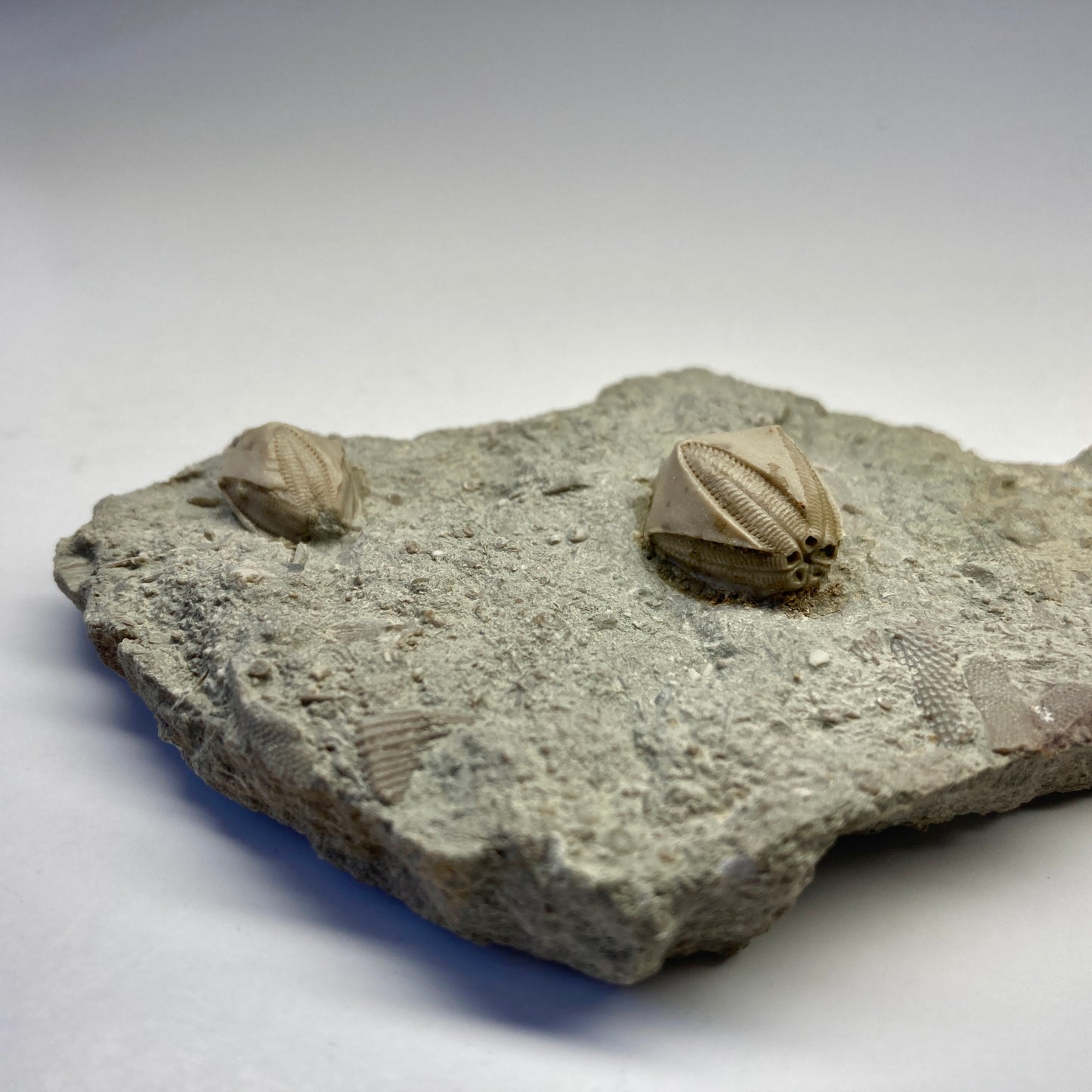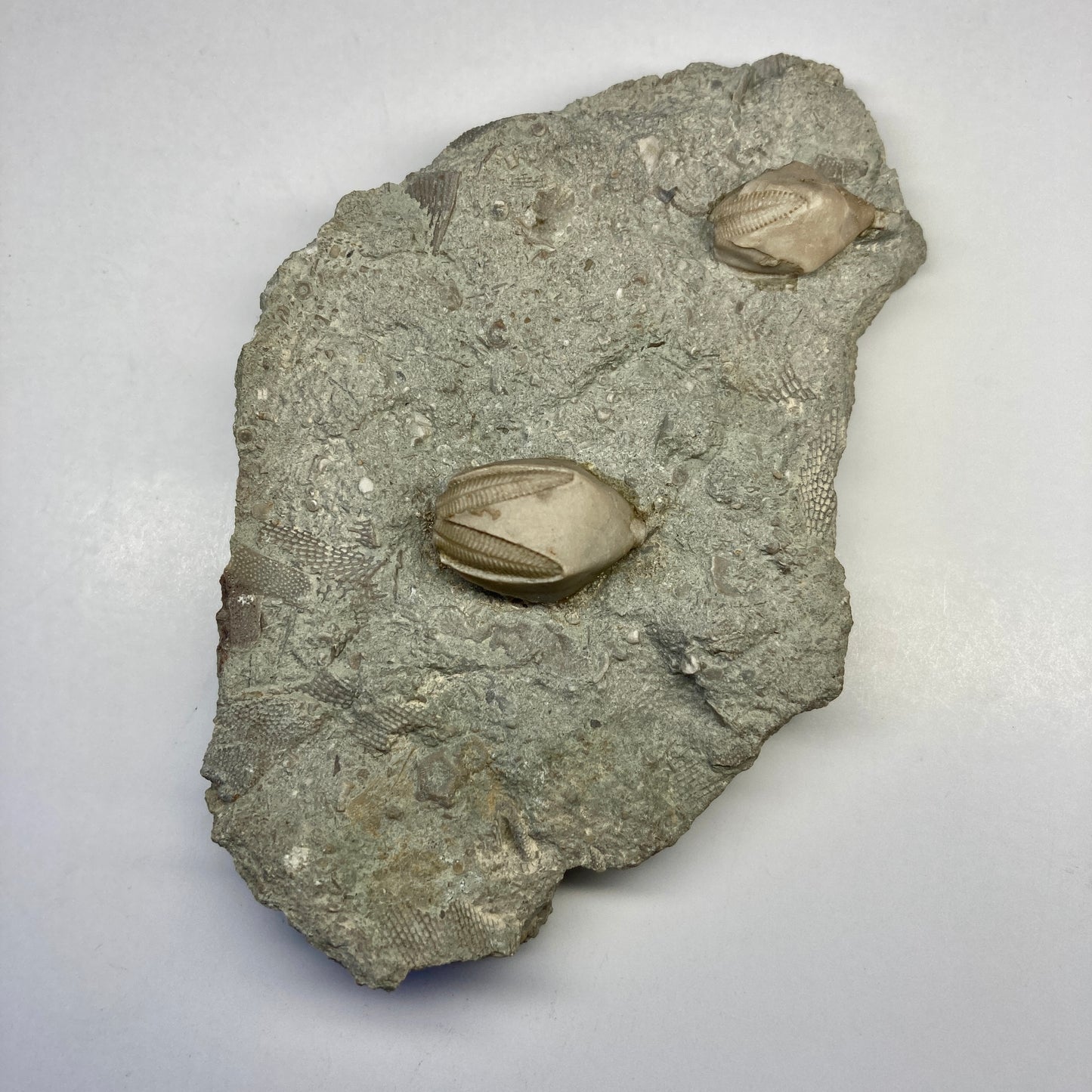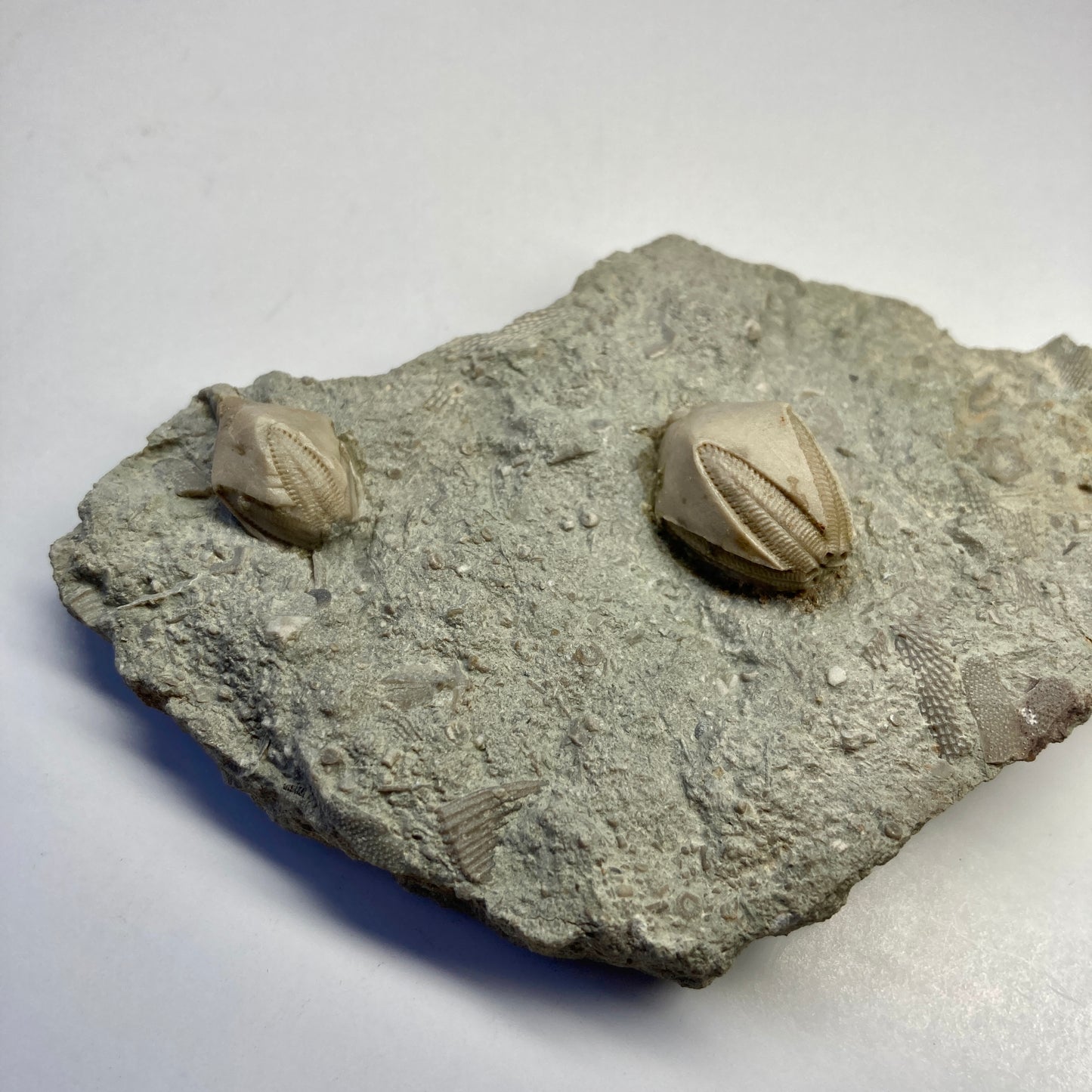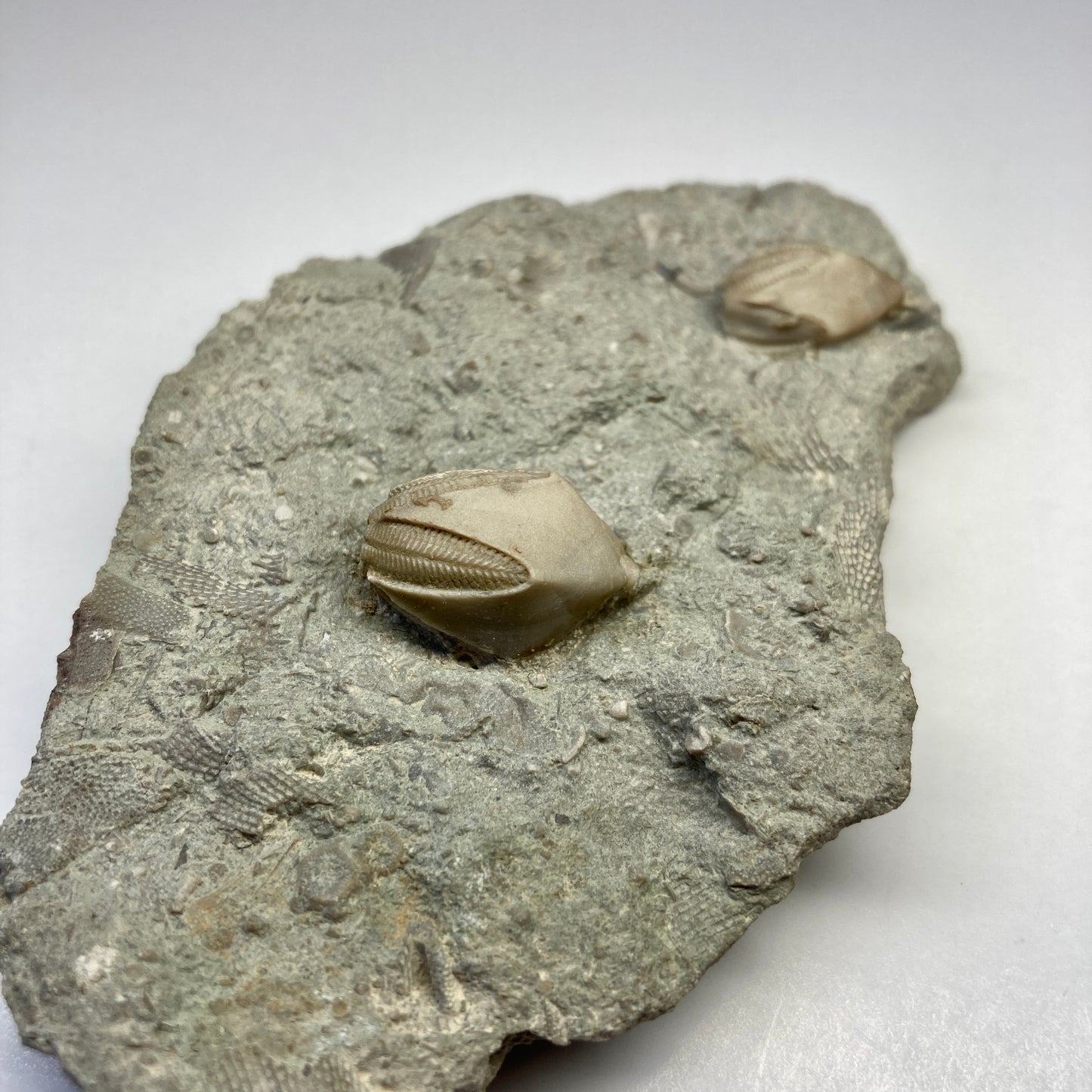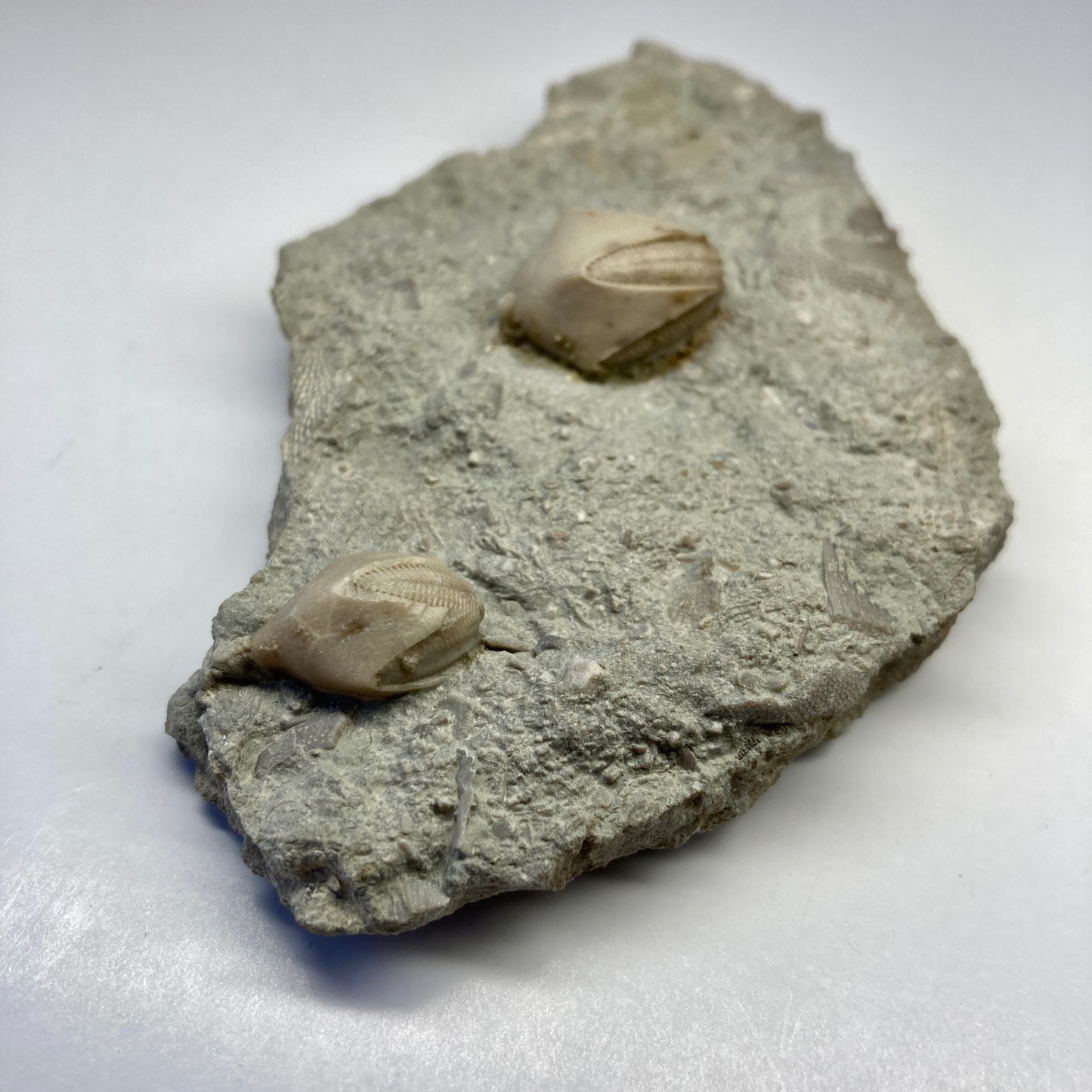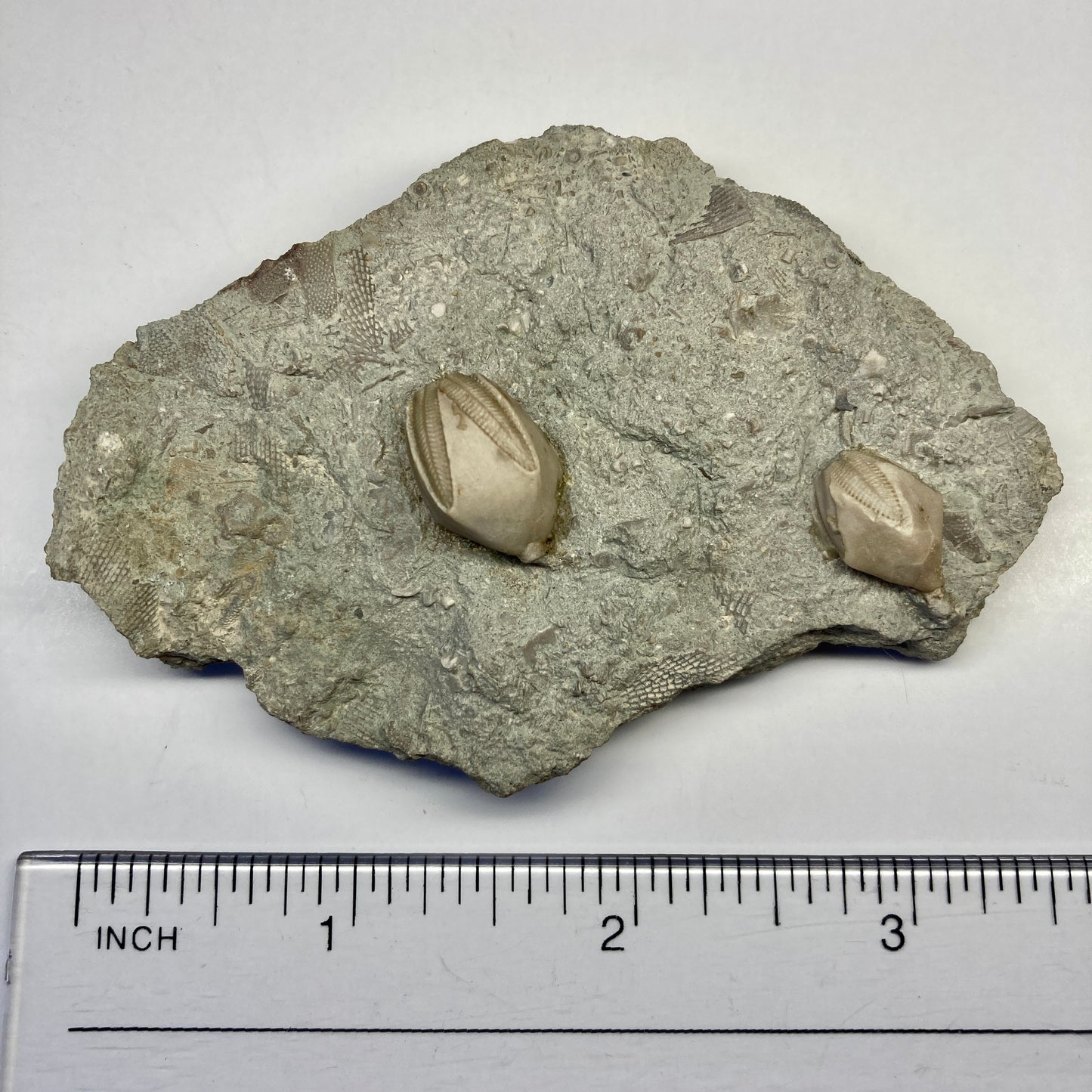Past & Present Science and Nature Store
Blastoid - Pentremites sp.
Blastoid - Pentremites sp.
Couldn't load pickup availability
Pentremites are extinct echinoderms that closely resemble crinoids. They, too, were stalked and grew to an average of 5 inches tall. Blastoids like Pentremites lived on the ocean bottom using their lengthy appendages to capture food particles around 325 million years ago.
The nut-shaped theca of the Pentremites is a set of interlocking plates of calcium carbonate that preserved the animal after death. The mouth was at the tip of this theca and the five tentacle-like ambulacra lined with fine structures called brachioles trapped food and directed it to the mouth. The five holes surrounding the mouth serve a purpose--the largest hole is the anus and the others are the start to the respiratory organs called hydrospires.
Type: Blastoid
Species: Pentremites sp.
Age: Mississippian (350 - 320 million years old)
Formation: Ridenhower Formation
Locality: Floraville, Illinois
Size (of plate): 3.63 x 2.44 x .63 inches
Size (of largest specimen): .69 x .44 x .31 inches
Weight: 1.9 oz.
Share
